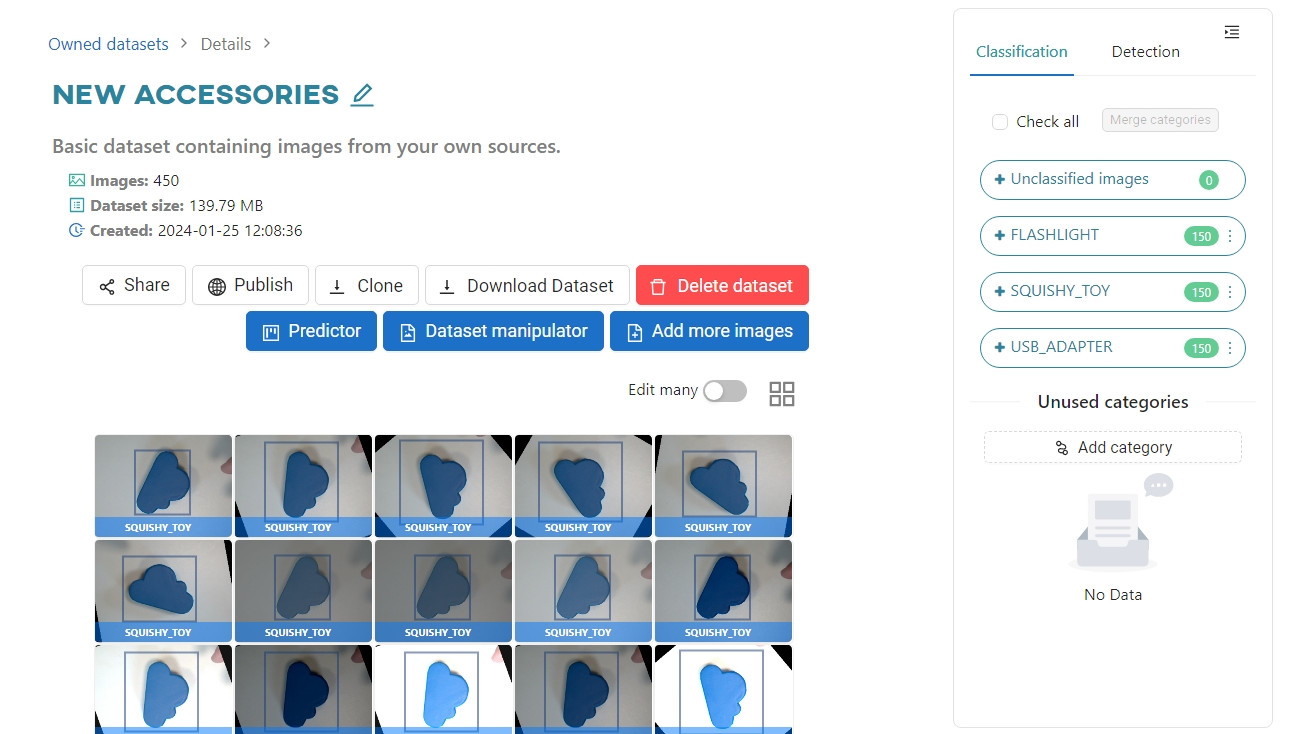#
Dataset manipulator
Using the dataset manipulator, we can augment the data of our datasets. Depending on our needs, we can generate additional images from our data using different operations. For the purposes of this tutorial, you will use each of them.
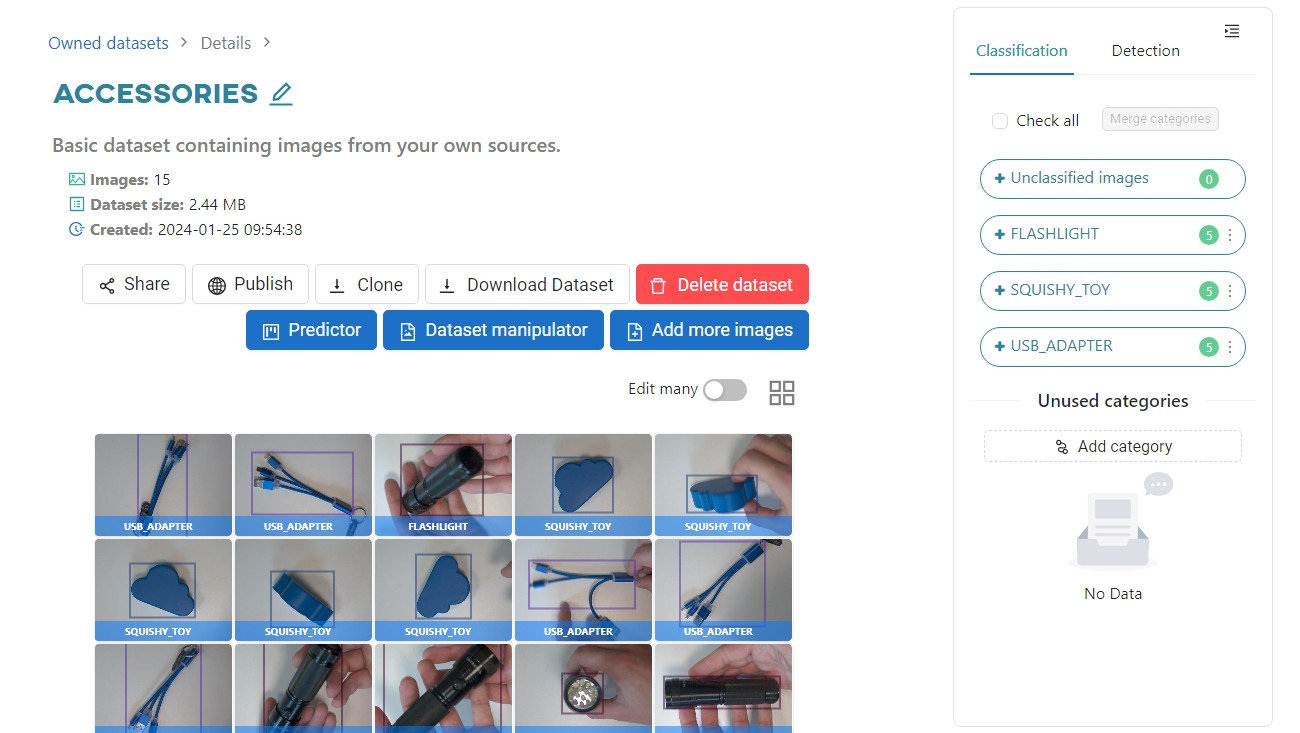
Dataset manipulator.
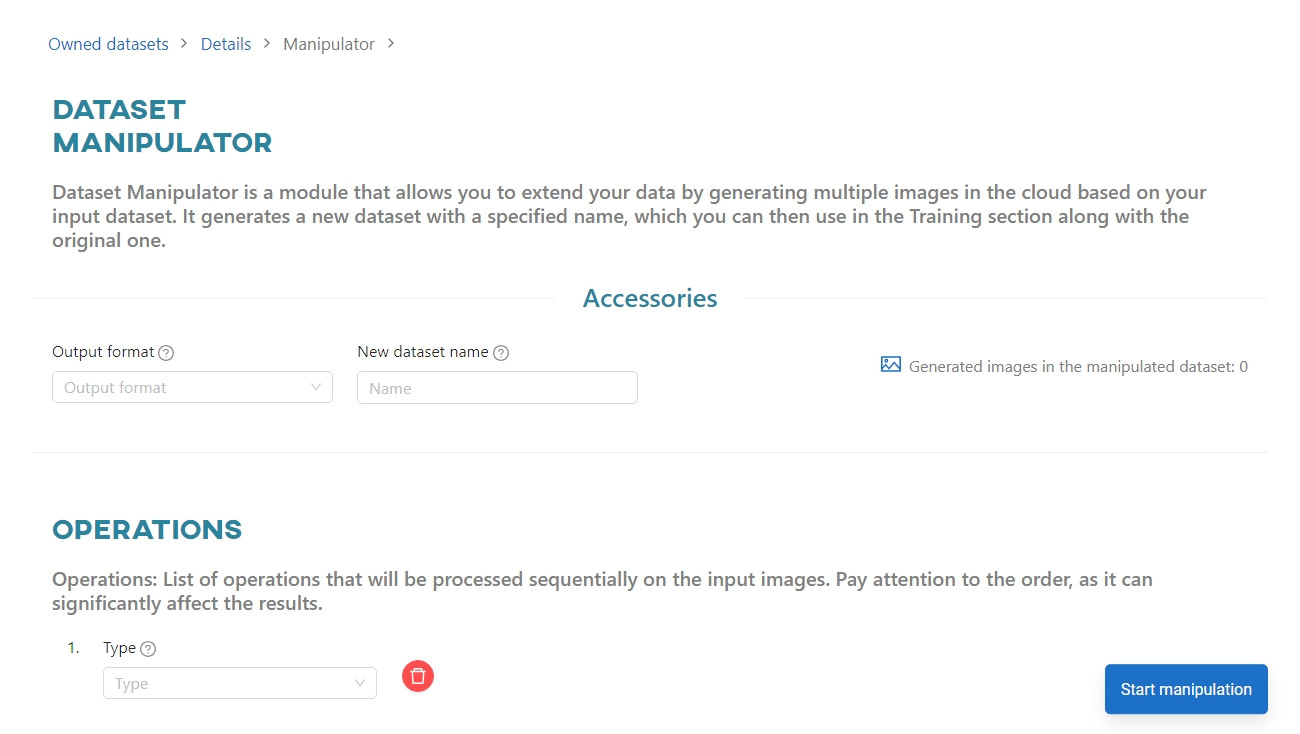
PNG and enter the name New Accessories for the new dataset that will be created as a result of the data augmentation.
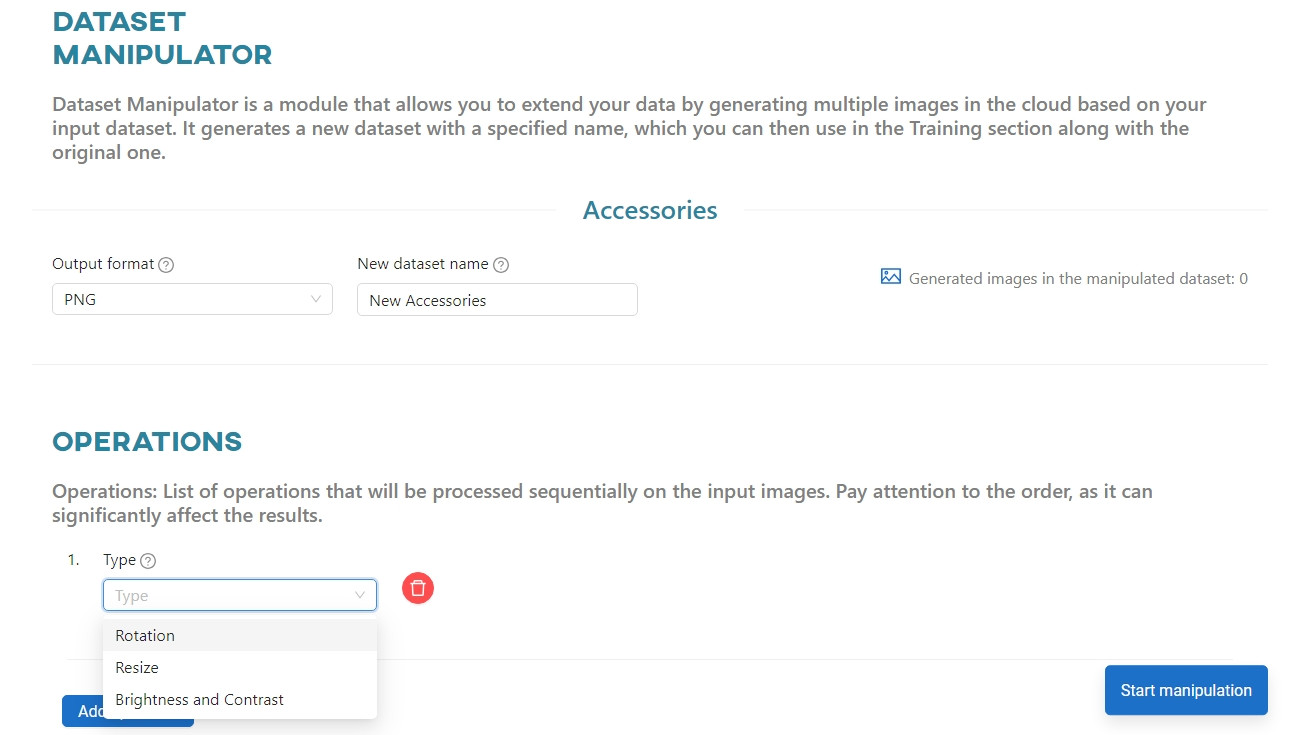
OPERATIONS section, select the first type of operation, Rotation.
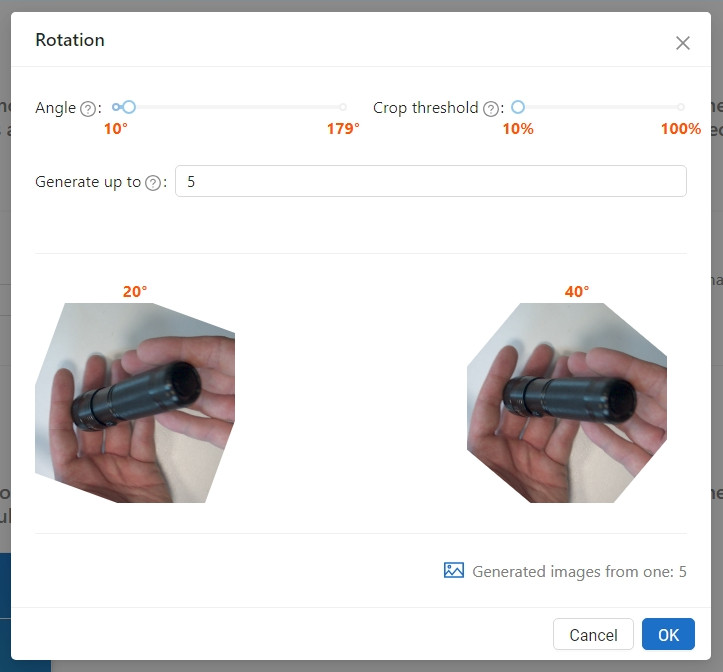
Angle bar to 20 and enter 5 in the Generate up to field.
Set the Crop threshold to 20%, this will remove the annotation of objects with visibility less than the indicated percentage.
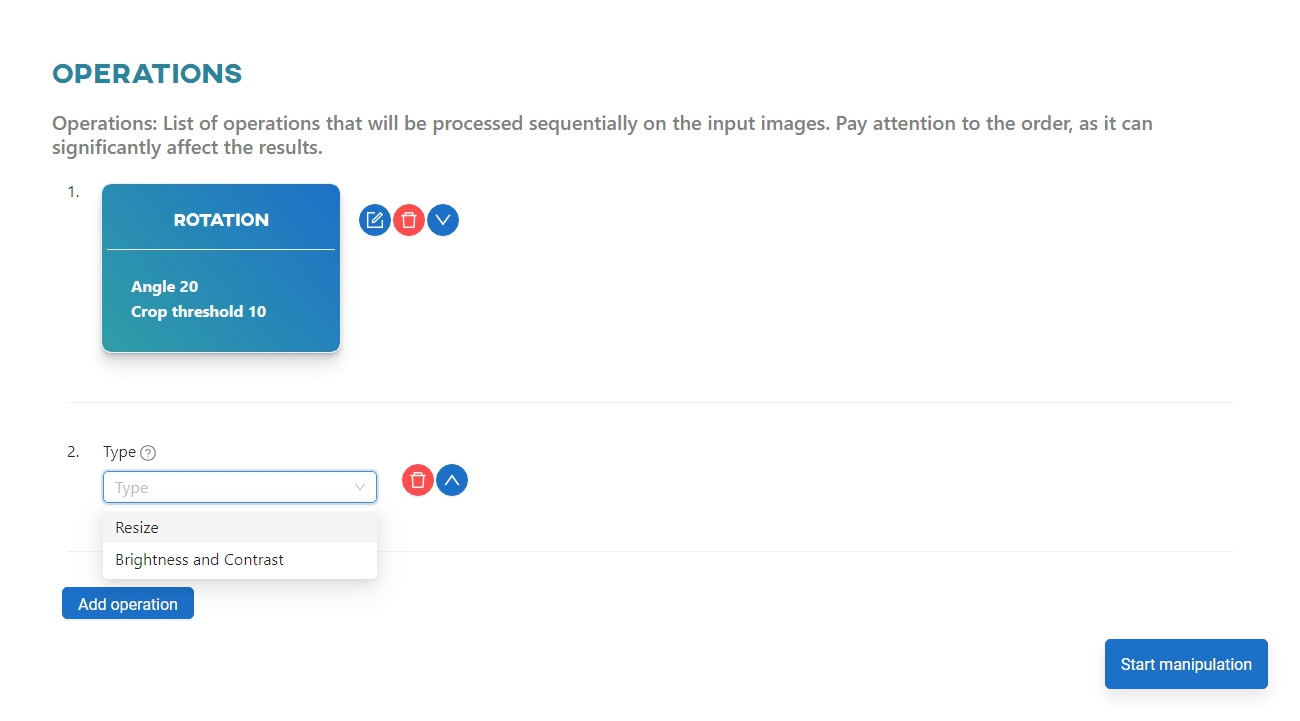
OK. Create a new modification using Add operation and select Brightness and Contrast from the list.
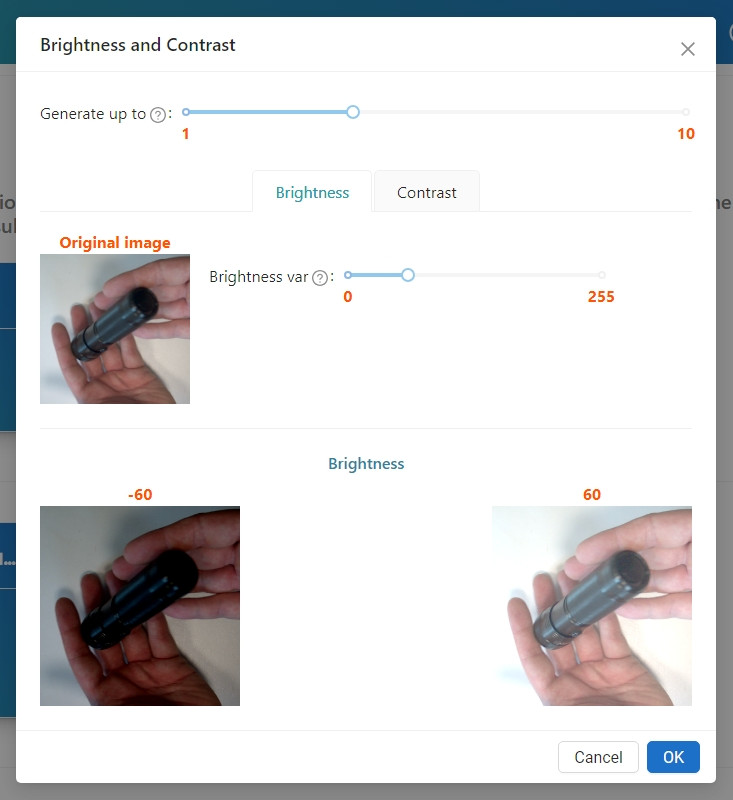
Generate up to field to 4. Set the Brightness var to 60 and go to the Contrast tab.
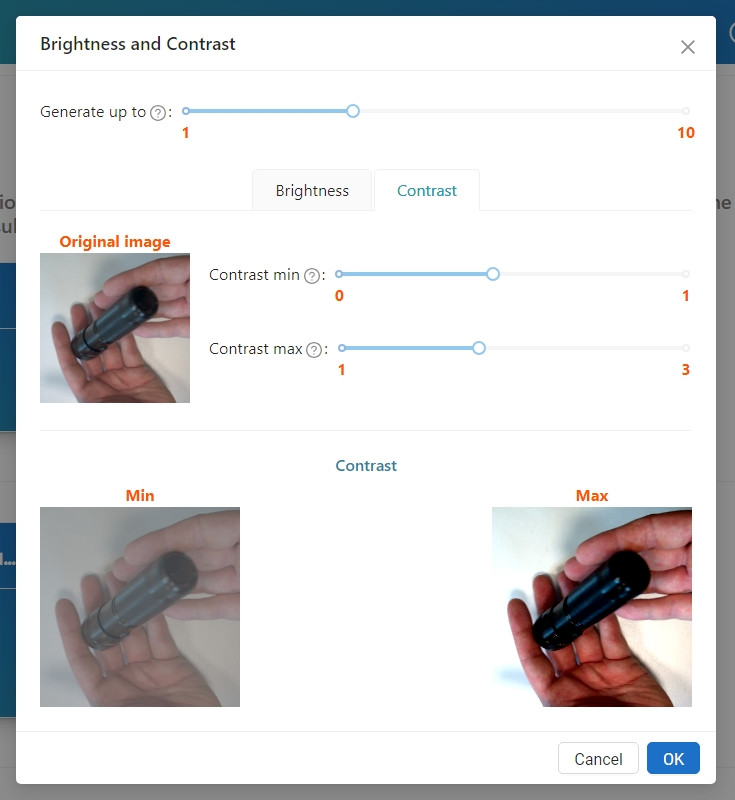
Contrast min to 0.5 and Contrast max to 1.8. Confirm by clicking OK. Finally, use the Resize operation.
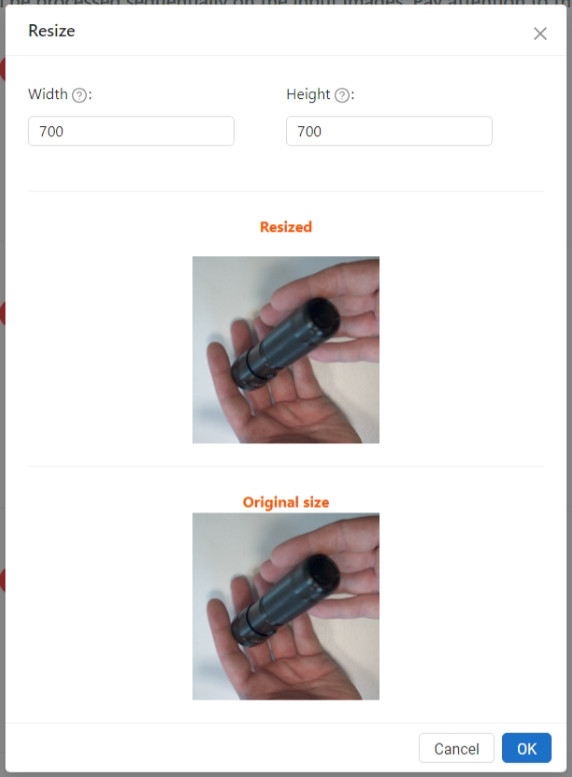
Width and Height to 700px.
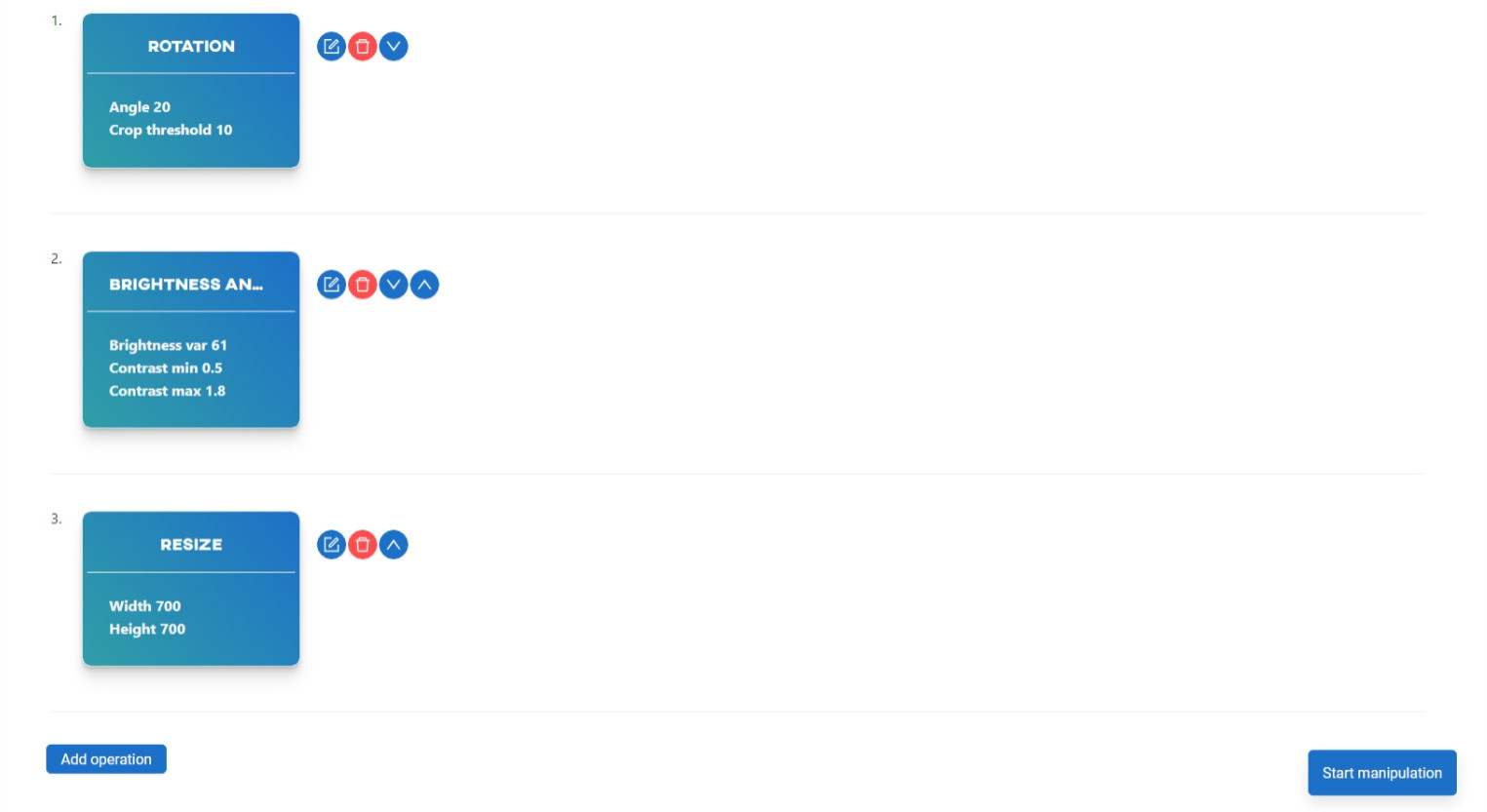
up and down arrows. Finally, click Start Manipulation and wait for the notification that will inform you that our server has finished generating the images.
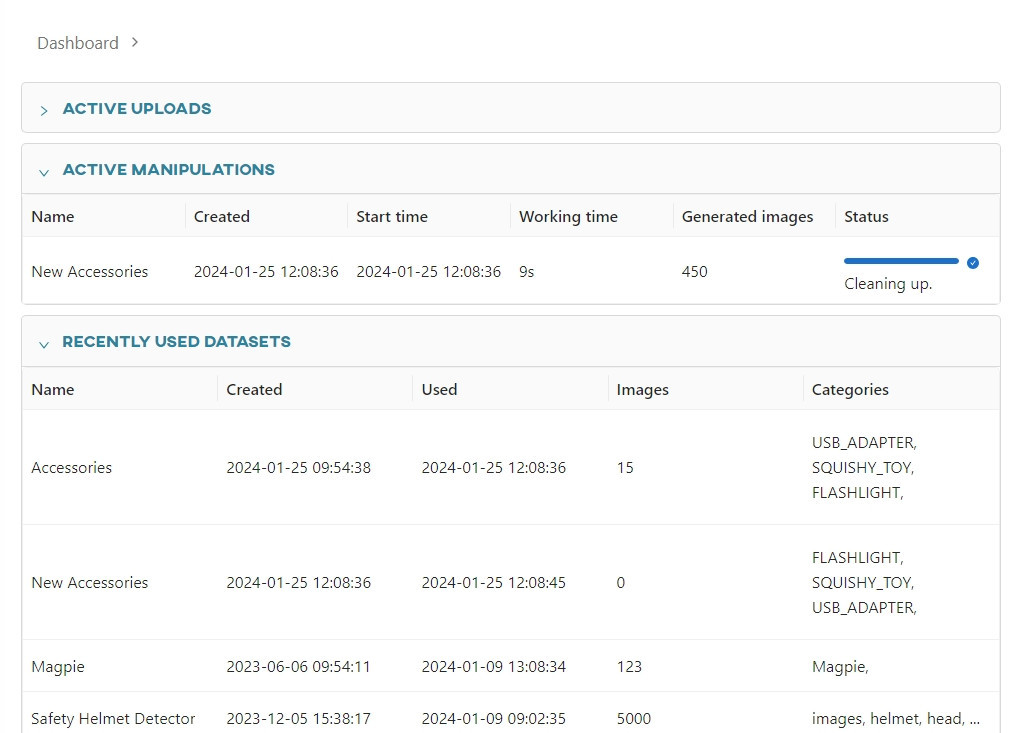
450 images, which is consistent with the settings and the fact that none of the images were deleted during the process. Using the initial 15 images, you generated 5 new rotated images from a single image 15 + 15 * 5 = 90. In the next operation, you created another 4 from 90 images with different contrast and brightness 90 + 90 * 4 = 450. You can now preview the resulting images.
